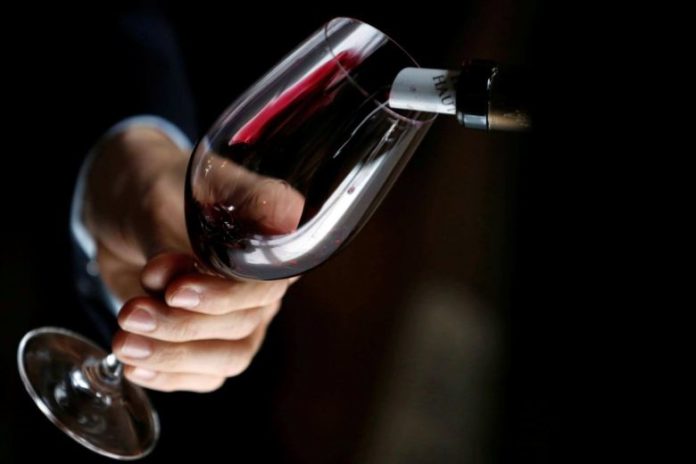he reader’s question was straightforward, but pointed in several directions. She was to attend a rose party, and was asked to bring food. What would be a suitable match?
Without knowing more about the plans for the event, I offered a few quick suggestions: Light fare, especially anything garlicky, spicy or accented with the flavours of the Mediterranean, rose’s spiritual homeland. But my mind raced with possibilities for a year’s worth of wine parties.
Some questions to ask yourself when planning such a thing: Is this for serious study of wine, whether you are new to it and exploring to see what you like, or studying for some certification of expertise? (We’ll call this a wine tasting.) Or will this be more of a social event centered on wine? (Which we’ll call a wine party.)
For either, you’ll need decent glasses. For a wine tasting, you will need brown lunch bags to conceal the wines and a marker for numbering the bags; serving them “blind” reduces any bias we get from the label or the price.
Each guest will need a white background – a sheet of paper or a cloth napkin will do – to best appreciate the wines’ color. They will also need cups to spit into. Red Solo cups are ideal, as are coffee mugs or your collection of cups from college football games. Finally, you’ll need at least one dump bucket for everyone to empty their spit cups into. I know this all sounds silly, but trust me: It is possible to spit discreetly, and if everyone’s doing it, you will soon get over any embarrassment. And you’ll quickly spot the one who isn’t.
For a wine party, you may want to skip the brown bags, though it can be fun to have everyone vote for their favourite wine and then do a big reveal. The person who brought the crowd favourite earns bragging rights until next time. You may also skip the spit cups – walking around with glass, plate and spit cup can be precarious – but it’s still a good idea to have a dump bucket handy if someone doesn’t want to finish a wine. Advise people to pour small tastes of each wine, and beware anyone who fills a glass; the idea is to share.
One essential you don’t want to neglect is food. And don’t plan on having the tasting first and food later – that’s a recipe for intoxication. Even when spitting, it’s good to have some food between tastes.
So get your group together and form a wine club. Alternate hosts each month. The host chooses a theme and sets a price range, and each guest brings an appropriate bottle and some food.
For themes, the possibilities are seemingly endless. Here are some suggestions to get you started over the next six months:
May: Rose, duh. It’s perfect for springtime, as the 2017 roses are pouring into the market and we all want to decide which ones to stock up on for summer.
June: Italian white wines. There is incredible variety in Italian whites, from grechetto, Gavi, Soave, fiano, Roero D’Arneis, to vernaccia, Verdicchio and many more. Warning: Your guests will immediately think of pinot grigio, so I suggest the host supplies that and tells everyone else to bring something different.
A variation on this theme would be a “Mediterranean Cruise Party.” Broaden the itinerary to include Spain, southern France, Italy and Greece. Assign each guest to bring a wine and an appropriate recipe from a specific country or region. Go crazy with the decor, costumes, music, etc.
July: American wines for Independence Day. Lots of leeway here: You could do local. Pick a state or region. An Oregon wine party would include lots of pinot noir, but guests could include some chardonnay, pinot gris and Riesling to showcase the state’s variety. Or toast the fireworks with U.S. sparkling wines.
August: The dog days of summer call for some “cool-climate” wines. Cool-climate generally means areas where it is challenging to ripen grapes because the growing season is cooler than others. Think West Sonoma Coast, Michigan, New York’s Finger Lakes, or the newer wine regions of Chile and Argentina. If you didn’t do U.S. bubblies in July, you could cool down in August by exploring sparkling wines from around the world, saving the expensive ones such as champagne for December. Think cava, prosecco, Crémant de Limoux.
September: Summer’s waning, the evenings are getting cooler, maybe it’s time for some heartier reds. How about a Rhone comparison? Either stick with one or more appellations of France’s Rhone Valley, or compare the main Rhone grape varieties of grenache and syrah with examples from California, Washington, Spain or elsewhere.
October: German Rieslings for a classy Oktoberfest party. Compare wines of the Mosel with those of Rheinhessen and Pfalz. Add some from Austria, Australia, New Zealand or the United States for comparison.
These ideas should get you out of the supermarket wine aisle and into your independent retail store, but more importantly, goad your thirst for exploration and discovery of new wines.















































